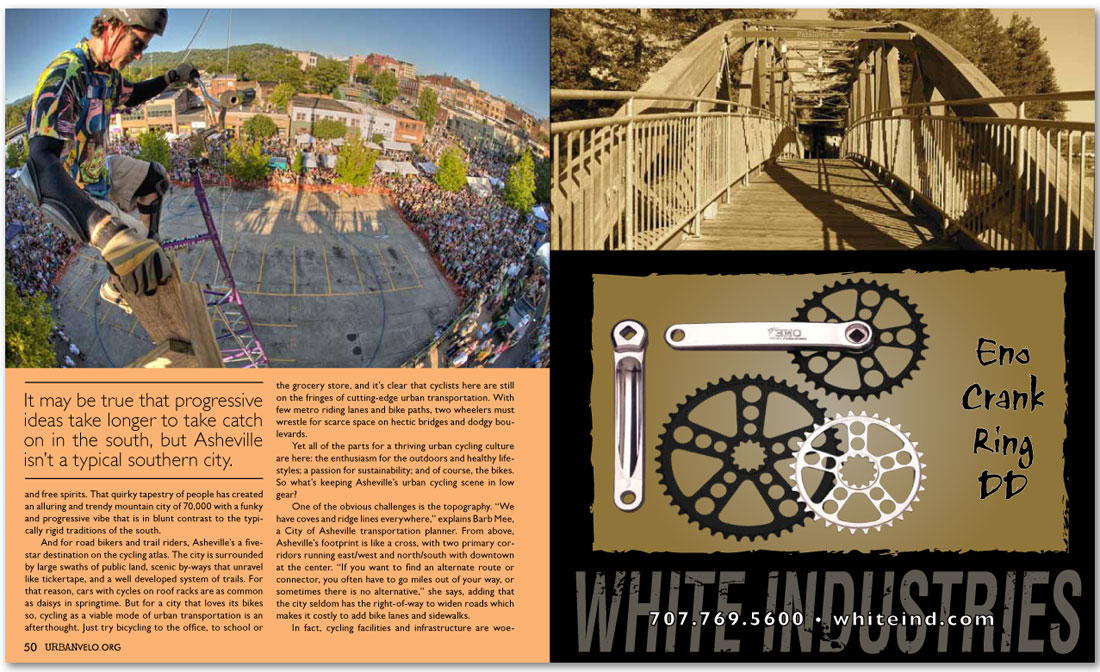


and free spirits. That quirky tapestry of people has created an alluring and trendy mountain city of 70,000 with a funky and progressive vibe that is in blunt contrast to the typically rigid traditions of the south.
And for road bikers and trail riders, Asheville’s a five-star destination on the cycling atlas. The city is surrounded by large swaths of public land, scenic by-ways that unravel like tickertape, and a well developed system of trails. For that reason, cars with cycles on roof racks are as common as daisys in springtime. But for a city that loves its bikes so, cycling as a viable mode of urban transportation is an afterthought. Just try bicycling to the office, to school or the grocery store, and it’s clear that cyclists here are still on the fringes of cutting-edge urban transportation. With few metro riding lanes and bike paths, two wheelers must wrestle for scarce space on hectic bridges and dodgy boulevards.
Yet all of the parts for a thriving urban cycling culture are here: the enthusiasm for the outdoors and healthy lifestyles; a passion for sustainability; and of course, the bikes. So what’s keeping Asheville’s urban cycling scene in low gear?
One of the obvious challenges is the topography. “We have coves and ridge lines everywhere,” explains Barb Mee, a City of Asheville transportation planner. From above, Asheville’s footprint is like a cross, with two primary corridors running east/west and north/south with downtown at the center. “If you want to find an alternate route or connector, you often have to go miles out of your way, or sometimes there is no alternative,” she says, adding that the city seldom has the right-of-way to widen roads which makes it costly to add bike lanes and sidewalks.
In fact, cycling facilities and infrastructure are woe-
White Industries